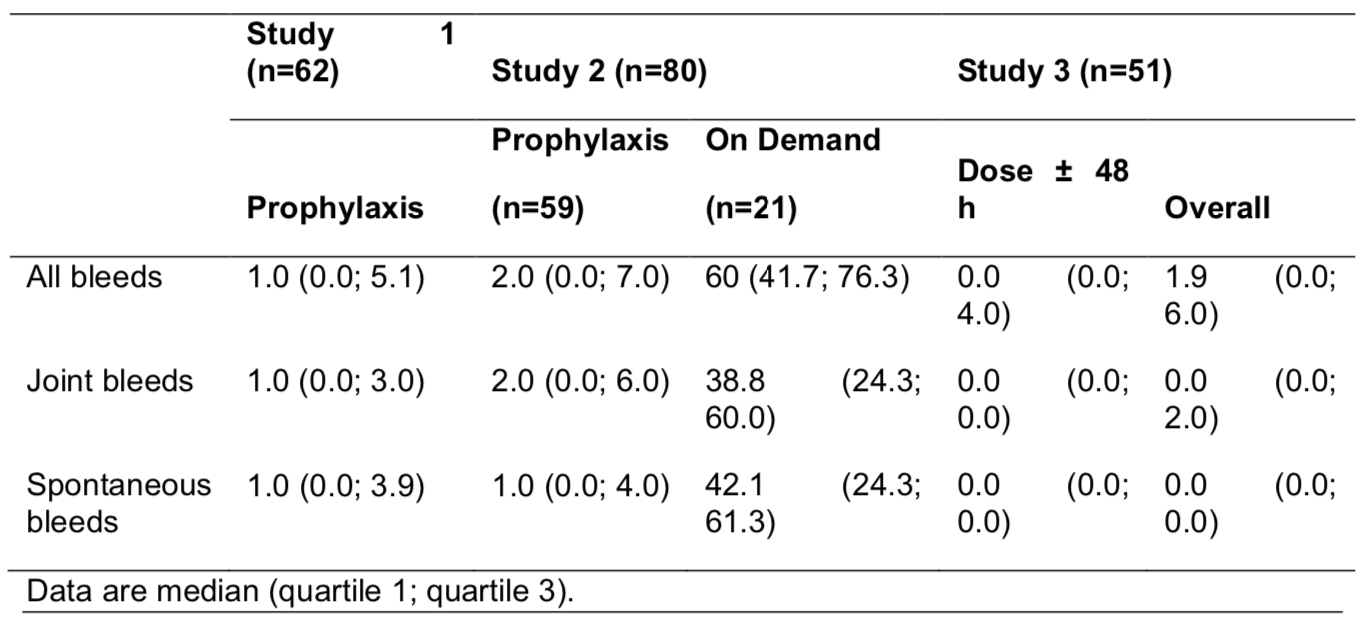Introduction:
BAY 81-8973 is Bayer’s new full-length recombinant factor VIII (FVIII) product for the treatment of hemophilia A, with no human- or animal-derived raw materials added to the cell culture, purification, or formulation process.
Methods:
The safety and efficacy of BAY 81-8973 for routine prophylaxis in patients with severe hemophilia A (<1% FVIII) was evaluated in 3 clinical studies: 2 in adolescent and adult previously treated patients (PTPs; aged 12–65 years [Study 1 and Study 2]) and 1 in children aged ≤12 years (PTPs: completed [Study 3]; previously untreated patients: ongoing), enrolling a total of 204 patients. In Study 1, the prophylaxis regimen was 20–50 IU/kg 2x–3x/wk as determined by the investigator. In Study 2, patients were randomized to prophylaxis (20–30 IU/kg 2x/wk or 30–40 IU/kg 3x/wk) or on-demand treatment. In both 12-month studies, the primary efficacy variable was the annualized bleeding rate (ABR). In Study 3, the prophylaxis regimen was 20–50 IU/kg 2x–3x/wk or every other day, as determined by the investigator, for ≥50 exposure days (approximately 6–8 months). The primary efficacy variable was the ABR for total bleeds occurring within 48 hours of previous prophylaxis treatment; ABR was also analyzed independent of time of injection.
Results:
A total of 193 patients treated with BAY 81-8973 were included in the analysis (Table 1). Sixteen (25.8%), 16 (27.1%), and 23 (45.1%) patients treated prophylactically had 0 bleeding episodes in Studies 1, 2, and 3, respectively.
Table 1. Annualized Bleeding Rates

Conclusions:
Study 1 and Study 2 demonstrated the efficacy and safety of routine prophylaxis treatment with BAY 81-8973 in adolescents and adults. Study 2 also demonstrated the superiority of prophylaxis over on-demand treatment during a one-year treatment period. An additional study in children aged ≤12 years showed low annualized rates for all bleeds, joint bleeds, and spontaneous bleeds within 48 hours after injection or later during routine prophylaxis.

